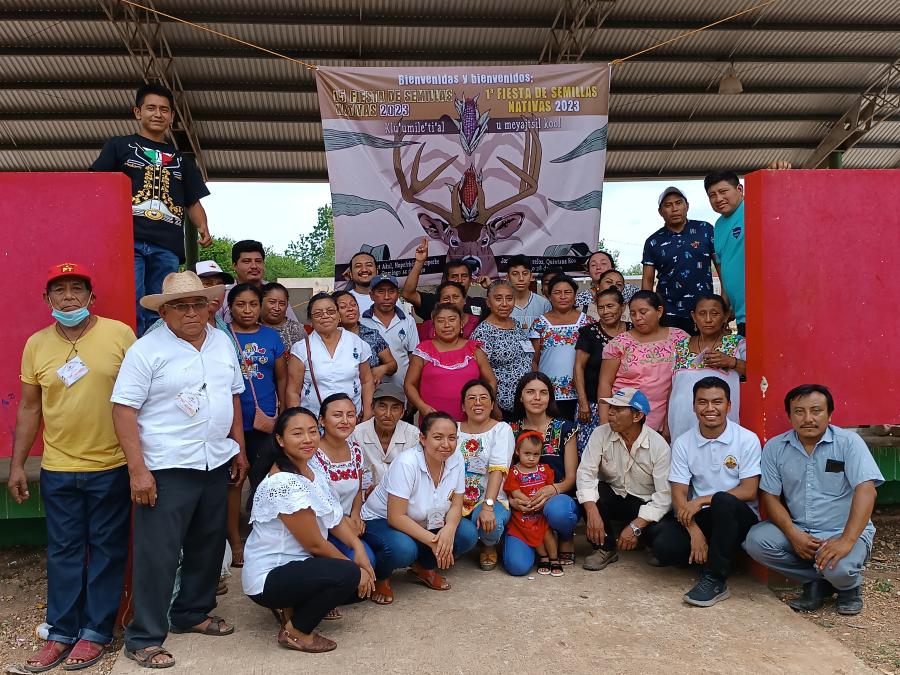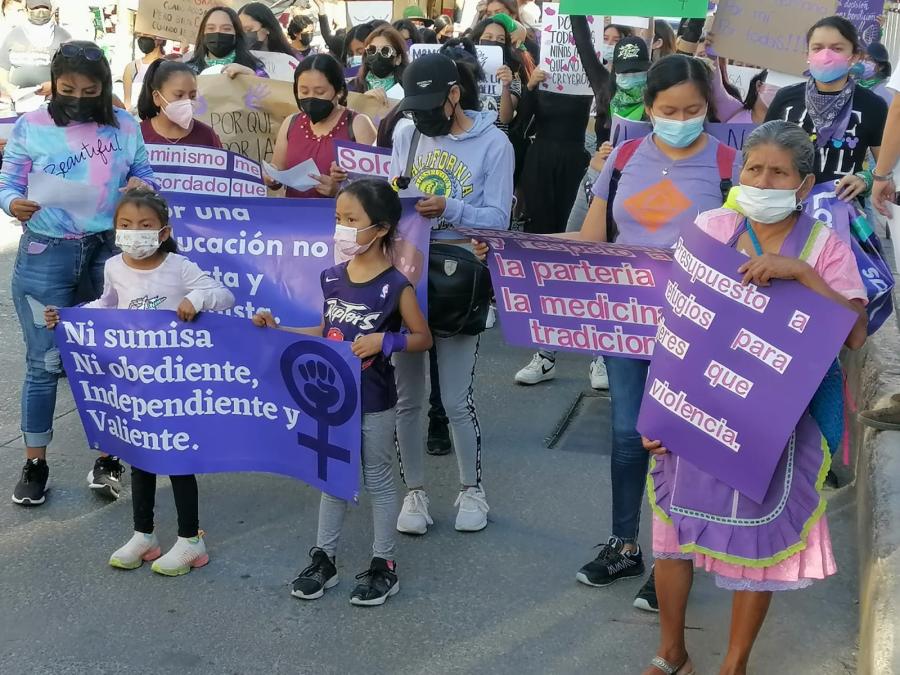The Tohono O’odham Nation encompasses nearly 4,600 square miles, the second largest Indian reservation in the United States, roughly the size of the state of Connecticut. Around 70 percent of the tribe’s 27,000 members have adult-onset Type II diabetes, the highest rate in the world. Tohono O’odham Community Action’s food program is working to promote physical and cultural health though traditional agriculture.
For more than a thousand years Tohono O’odham have lived in the dry, baking sun of the Sonoran desert, straddling what is today northwestern Mexico and southwestern United States. Generations of Tohono O’odham (“Desert People“) have perfected the art of living in this harsh environment, which can reach 130 degrees in the summer and receives on average a little more than 10 inches of rain year.
Traditionally, Tohono O’odham had three types of food production: ak chin (flood plain) agriculture during the summer monsoon rains; harvesting of wild cactus fruits, seeds, and nuts; and hunting. Combined, these three methods provided the desert people with tepary beans, squash, melons, chilies, cholla buds, prickly pear cactus pads, mesquite beans, acorns, saguaro fruits, rabbit, deer, and havalina—all the nutrition and variety necessary for a healthy diet. Legends, songs, ceremonies, and the language of the Tohono O’odham are inextricably tied to these desert foods and food production. In Tohono O’odham mythology, the tepary is the child of the Desert People, and the Milky Way is white tepary beans scattered throughout the sky.
Like the Tohono O’odham themselves, all of the plants in the desert (cultivated and wild) have certain adaptations that allow them to survive in long periods of drought and high heat. “When there are these short periods of rain, these plants absorb water very quickly into a kind of a gel,” says Tristan Reader, co-director of Tohono O’odham Community Action (TOCA), a grassroots organization that was formed in 1996 to create effective, culturally based responses to the tribe’s problems. “And what that does is release the water very slowly. When eaten, the same compound (a kind of soluble fiber) slows the absorption of sugar into the blood stream.” As a result, the function of the pancreas in Tohono O’odham community members was entirely suppressed. Its typical function of regulating blood sugar by producing insulin was unnecessary; the traditional foods themselves were controlling and regulating sugar in the blood.
When people moved away from that traditional food system to a mainstream American diet, they did not have the insulin to manage the high carbohydrates and sugar. As a result, Tohono O’odham now have the highest levels of diabetes in the world.
Until the 1930s and ‘40s, the Tohono O’odham were entirely self-sufficient. TOCA estimates that upwards of 20,000 acres of land were under ak chin cultivation, producing some 1.4 million pounds of tepary beans annually. But several factors led to the near-complete destruction of their farming culture. Many Tohono O’odham were encouraged to take jobs as field laborers in the large irrigated farms around the Tucson area, making it impossible for them to tend to their own farms. Tohono O’odham children were forced into boarding school programs that separated them from their families and culture. Young men enlisted in the military during World War II, leaving fields empty for years at a time. By 2001, the Tohono O’odham produced less than 100 pounds of tepary beans, according to TOCA. At the same time, federal food programs and supermarkets increased the access to foods high in sugar, salt, and carbohydrates. Cases of diabetes, unheard of in 1960, skyrocketed. Today, close to 70 percent of the O’odham population has adult-onset Type II diabetes. There are even cases in children as young as seven.
“In a very real sense, the destruction of the traditional food system is literally killing thousands of Tohono O’odham,” reports a study conducted by TOCA and the Tohono O’odham Community College. The decline in the physical health of the people and the cultural health and vitality of the community is intertwined. TOCA’s Community Food System program seeks to combat the root causes of diabetes while promoting and revitalizing the O’odham Himdag, the Desert People’s Way. One of their goals is revitalizing the rain ceremony. “The reason the rain ceremony stopped being done was because the people were not doing the farming,” Reader says. “If you are not farming you don’t really care about the rains and the floods as much, and so you don’t go into the all of the difficulties and challenges of doing the ceremony.” TOCA helped elder Christine Johnson to plant a traditional garden for the first time in many years. “You know,” she told Reader, “every year I go to the rain ceremony and sing for the rain—but this year with my garden I sang like I meant it.”
“And that really is the critical part,” Reader says. “It’s not just that ceremonies have symbolic meaning; it’s that the meaning derives out of the actual practice of culture. If you bring back the ceremony without the purposes of the ceremony and the agriculture; it really loses its meaning and it becomes a shell of the culture.”
In addition to increasing production and distribution of traditional foods, TOCA is now working on a plan to build a community-wide coalition of tribal leaders, schools, and government and tribal programs to shift how people think about food and wellness to a more culturally based approach. TOCA’s goals for the Tohono O’odham are in line with other native food programs that promote health, like the White Earth Land Recovery Project’s wild rice campaign in Minnesota, the Indigenous Diabetes Education Alliance in the Dakotas distributing bison meat, and the Iroquois White Corn Project near Buffalo, New York. Reader says that all of these projects are really focused on a return to the traditional food system for all local communities: “It is your culture, it’s your physical health; it’s about social relationships and community—all of that is involved in foods and the food system. Increasingly, there is an understanding among native peoples that quite literally, you are what you eat.”
—Lisa Matthews is Cultural Survival’s program officer.
Editor’s Note: The Food for Life department will appear in each issue of Cultural Survival Quarterly, celebrating traditional indigenous foods.
Sonoran Desert Hummus
2 cups dried white tepary beans, sorted and rinsed
10 cups water
1/3 cup extra virgin olive oil
1/2 cup lemon juice
4 cloves garlic, finely chopped
1/2 teaspoon ground cumin seeds
salt and black pepper to taste
2 tablespoons salt-cured capers, rinsed
Melinda’s Habanero Hot Sauce to taste
Fresh cilantro for garnish
Lemon wedges for garnish
Boil tepary beans until very tender (about 2 hours). Drain beans and reserve the cooking liquid. Using a stick/hand held blender or food processor, puree the beans with the oil, lemon juice, and garlic. Add cooking liquid as necessary to achieve desired consistency. Mix in cumin, salt, pepper, capers, and hot sauce. Garnish with cilantro and lemon wedges.
Cholla bud salad with Citrus Vinaigrette
2 cups dried cholla buds, boiled and picked over to remove any remaining thorns
1 tsp olive oil
1 garlic clove, minced
1 Large jicama, about 1 cup, diced
1 Fresh pineapple, about 1 cup, diced
1 Jalapeno, ribs and seeds removed, diced
1/4 cup Pomegranate seeds
1/4 cup Parsley, chopped
1/4 cup Mint, chopped
1 bag, 6 0z, Baby spinach leaves
Saute cholla buds in olive oil and minced garlic. Cool and place in a large bowl. Add remaining ingredients and dress with Citrus Vinaigrette.
Note: To cook dried cholla buds, boil in twice as much water for about 2 hours or until buds are tender.
Citrus Vinaigrette
1/4 cup Olive oil
2 tablespoons Seasoned rice wine vinegar
1 cup Orange juice, preferably fresh
1 tablespoon minced ginger
Salt and pepper, to taste
Pinch of red pepper flakes
Whisk olive oil, rice wine vinegar and orange juice together. Add remaining ingredients.
You can prepare the dressing one day in advance and keep refrigerated, and can combine dressing with all ingredients except herbs and spinach 24 hours in advance. The salad can be eaten right away, but is best if prepared several hours ahead of time so the flavors can meld.
Recipies from TOCA. Tohono O’odham traditional foods can be purchased at www.heritagefoodsusa.com


